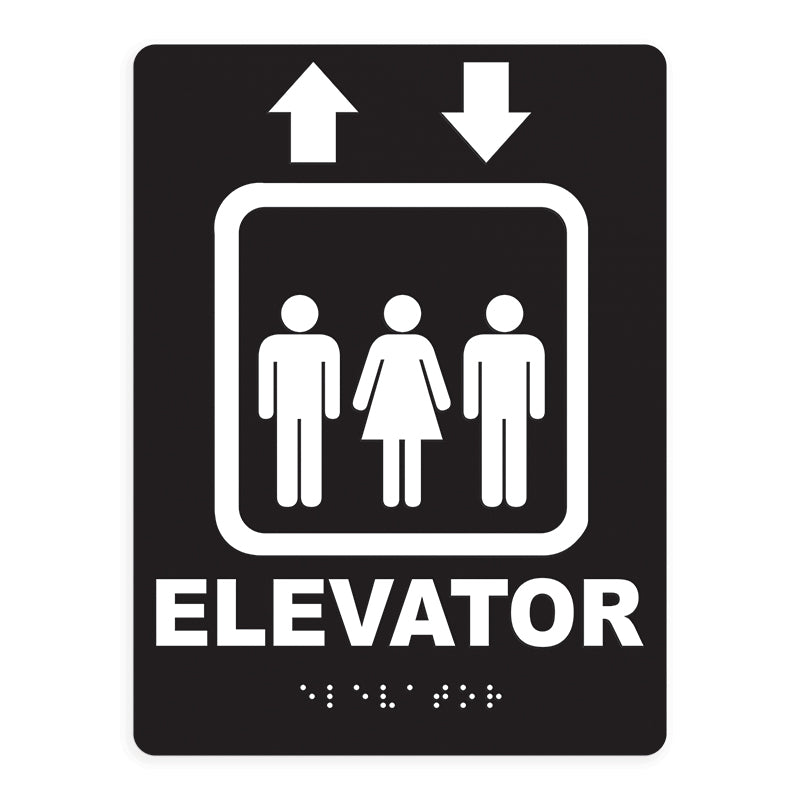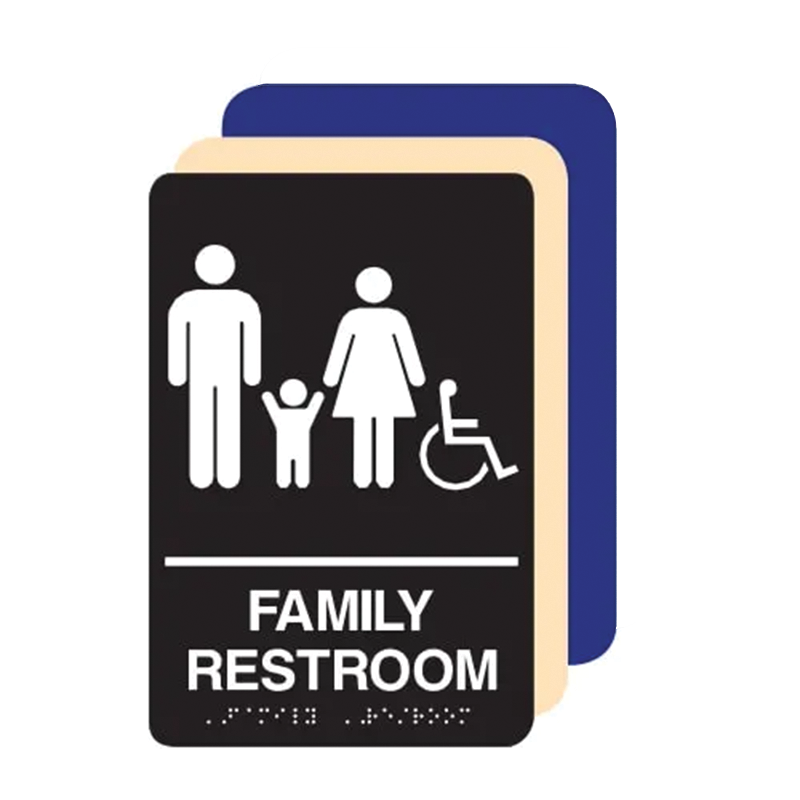Check out the Value of ADA Signs in Public Spaces
Check out the Value of ADA Signs in Public Spaces
Blog Article
ADA Signage: Guaranteeing Ease Of Access and Compliance in Public Spaces
ADA signs plays a crucial role in assuring availability and compliance within public rooms, significantly adding to an inclusive atmosphere for individuals with handicaps. By adhering to ADA requirements, signs not just helps with navigating however additionally highlights an organization's dedication to diversity and equal rights. As we discover the subtleties of ADA signs, from tactile functions to develop details, it's critical to think about exactly how these aspects integrate to promote the legal rights of all individuals. What are the usual pitfalls organizations deal with in preserving conformity, and exactly how can future fads in signs proceed to drive accessibility forward?
Importance of ADA Signs
In modern-day culture, the value of ADA signs prolongs beyond simple compliance with legal requireds to personify a dedication to inclusivity and availability for all individuals. These signs are important in creating settings where people with specials needs can navigate public spaces with the very same convenience and self-reliance as those without disabilities. By providing clear and standard info, ADA signage makes certain that everybody can access facilities, solutions, and details without obstacles.
The relevance of ADA signage hinges on its capacity to improve the lifestyle for individuals with handicaps by advertising equivalent access. It removes the barriers that may otherwise prevent their capability to take part completely in community life. These signs serve as noticeable indicators of a company's devotion to diversity and equal rights, reflecting wider social values that champion the civil liberties and dignity of all individuals.
In addition, ADA signage plays a crucial function in public safety. By directing people to exits, washrooms, and various other important centers, it makes certain that all people, no matter physical capability, can leave safely during emergency situations. In recap, ADA signage is not just a regulative need but a powerful tool for promoting a comprehensive and equitable culture.
Key Aspects of Conformity

Placement is important; indications should be installed in locations that are obtainable and quickly visible. Usually, signage needs to be placed in between 48 and 60 inches from the ground to make certain access for both standing and mobility device individuals. Tactile elements, such as Braille, are essential for people with aesthetic problems, giving important info in a non-visual style.
High-contrast colors in between the text and background are essential to improve readability for individuals with reduced vision. The ADA mandates details contrast ratios to make certain clearness. Furthermore, character dimension is an essential consideration, with minimal height needs determined by the viewing range to make sure readability from various angles.
Layout Considerations for Accessibility
Creating available signs calls for a precise technique to guarantee it fulfills the needs of all individuals, specifically those with disabilities. The size of the text is equally important, with ADA standards suggesting a minimum height based on seeing distance to ensure clarity.
Contrasting colors between message and background are necessary for exposure, particularly for individuals with visual impairments. A high comparison proportion aids differentiate the message from its history, boosting readability under various lighting problems. In addition, tactile components, such as Braille and raised personalities, are important for individuals who are blind or have low vision. These elements need to be situated at a consistent elevation and position to make certain very easy gain access to and comprehension.
Furthermore, the positioning of signs plays a considerable duty in accessibility. Indicators must be installed in places that are unobstructed and conveniently obtainable. Making sure that signage is installed at appropriate heights and angles allows all customers, consisting of those using mobility devices, to interact with them successfully.
Usual Errors to Prevent

One more prevalent mistake is the wrong positioning of signage. ADA standards specify exact elevation and location needs to make certain that signs are easily visible and reachable by all people, including those utilizing wheelchairs. Disregarding these guidelines not just hampers access however additionally takes the chance of non-compliance with lawful criteria.
Additionally, inadequate contrast in between text and background is a frequent oversight. Appropriate comparison is necessary for readability, specifically for individuals with low vision. Developers occasionally choose colors that are aesthetically enticing yet lack the needed contrast, rendering the message tough to determine.
Finally, some designers fail to integrate responsive elements, such as Braille, which are essential for individuals that are blind. Leaving out these attributes not just results in non-compliance with ADA policies but also limits access for a section of the population that depends on responsive information.
Future Trends in Signage
Developments in technology and increasing awareness of inclusivity are forming the future fads in signage layout. As society comes to be extra mindful of diverse requirements, the combination of smart technologies right into signs about his is acquiring traction. Digital signage, for example, is advancing to include interactive functions and real-time updates, which can be essential over here in supplying dynamic details in public areas. These signs typically incorporate touch screens or gesture-based controls, making it possible for users to browse content tailored to their particular needs.
One more emerging pattern is the usage of enhanced fact (AR) to improve user experience. AR-enabled signs can overlay digital information onto the physical atmosphere, providing aesthetically damaged people with auditory or haptic comments. ADA Signs. This modern technology not only enhances access yet also produces an engaging experience for all individuals
Sustainability is likewise a significant variable influencing signs patterns. Green products and energy-efficient illumination options are being focused on to align with global ecological goals. Innovations in products science are leading to the advancement of even more weather-resistant and long lasting indications.
Final Thought
ADA signs plays a crucial function in guaranteeing access and compliance within public spaces by including tactile components, high-contrast shades, and tactical placement. The adherence to ADA standards not just assists in secure navigating for people with specials needs yet additionally represents an organization's dedication to diversity and inclusivity. By avoiding common mistakes and embracing future fads, public rooms can remain to progress these worths, helpful site guaranteeing that the legal rights and dignity of all individuals are valued and promoted.
ADA signs plays an indispensable duty in assuring access and conformity within public areas, considerably contributing to an inclusive setting for individuals with handicaps. As we check out the nuances of ADA signage, from responsive functions to design complexities, it's important to consider how these components coalesce to copyright the civil liberties of all individuals.In contemporary culture, the relevance of ADA signage expands past mere conformity with legal mandates to personify a commitment to inclusivity and accessibility for all people. By offering standard and clear information, ADA signs guarantees that every person can access facilities, solutions, and info without obstacles.
ADA signage plays a vital function in guaranteeing access and compliance within public rooms by integrating responsive aspects, high-contrast shades, and calculated placement. (ADA Signs)
Report this page